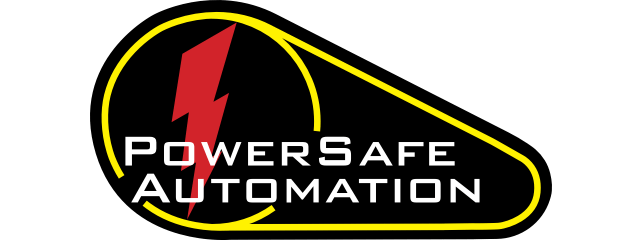TL;DR
Stopping motion isn’t the same as being safe. Machines can coast, creep, or restart unexpectedly. Zero-speed detection (a verified “standstill” signal) lets you unlock guards only after hazardous motion has ceased, or keep motion at or below a verified safe speed—when your risk assessment supports it. Implement it with safety-rated speed/standstill monitors, drive-integrated safe-motion functions, safety encoders, or sensorless standstill relays, and validate to ISO 13849-1 / IEC 62061 performance levels. LOTO still applies for servicing unless a narrowly defined exception and alternative protective measures are in place.
Why zero-speed detection is so important
Even after a stop command, stored kinetic energy can keep parts moving long enough to injure someone—think spindles, flywheels, centrifuges, conveyors, roll mills, and fans. A safety function that verifies standstill before permitting access (e.g., unlocking an interlocked door) materially reduces risk of entanglement, shearing, and impact. Standards emphasize preventing unexpected start-up and ensuring guards remain locked until hazardous functions have ceased.
Where this fits with LOTO
OSHA’s Control of Hazardous Energy requires LOTO for servicing/maintenance. A limited “minor servicing” exception applies during normal production only when tasks are routine/repetitive/integral and you use alternative measures that provide effective protection—such as validated interlocks plus safe motion/standstill monitoring. Treat this narrowly and document your justification. OSHA
Key concepts: stop vs. standstill vs. safe motion
-
Stop categories (IEC/ISO)
-
Cat. 0: power removed → uncontrolled stop (often via STO safe torque off).
-
Cat. 1: controlled deceleration to stop, then power removed (often via SS1).
-
Cat. 2: controlled stop with power maintained (generally not used for E-Stops).
-
-
Drive-integrated safe-motion functions (IEC 61800-5-2)
Typical functions include STO, SS1/SS2, SOS (Safe Operating Stop), SLS (Safely-Limited Speed), SSM (Safe Speed Monitor), SDI/SBC. These functions allow verified standstill or enforce/confirm a safe speed threshold. -
Performance & validation
Design and verify the safety function to the required Performance Level (PLr) per ISO 13849-1 (or SIL per IEC 62061). Annex A of ISO 13849-1 guides PLr determination from your risk assessment.
Device options for zero-speed / standstill detection
Below are the main approaches you can mix-and-match based on your machine risk, architecture, and budget.
1) Safety-rated speed/standstill monitor relays (encoder/prox inputs)
Standalone modules evaluate pulses from encoders or proximity sensors (gear/tooth wheels) to detect zero speed and can provide dual-channel, safety-rated outputs.
-
Pilz PNOZ s30: monitors standstill, speed, range, direction; up to PL e / SIL 3 depending on configuration.
-
SICK FX3-MOC (Flexi Soft Drive Monitor): supports SS1, SS2, SOS, SSM, SLS, SDI, SBC and multiple speed levels.
-
Banner SSM modules: monitor over/under/zero-speed using two PNP sensors.
-
ifm DA standstill monitor: pulse evaluation for safe detection of underspeed/standstill.
When to use: retrofits, multi-vendor drives, or when you need a dedicated safety monitor independent of the drive.
2) Sensorless standstill monitors (back-EMF)
These detect standstill by measuring motor residual voltage—no encoder needed. Great for conveyors and simple induction motors.
-
DOLD SAFEMASTER S: sensorless standstill monitoring for single/three-phase motors, enabling access only after coasting has ceased.
-
Rockwell MSR55P: standstill detection without sensors; MSR57P for safe speed monitoring applications.
When to use: where adding encoders is impractical and verified standstill (not precise speed) is the requirement.
3) Drive-integrated safe-motion
Modern VFDs/servo drives embed Safety Integrated features. With proper commissioning/validation, the drive can enforce and signal STO/SS1/SS2/SOS/SLS/SSM directly.
-
Siemens SINAMICS (Safety Integrated): function manuals detail STO, SS1, SLS, SSM, etc., with commissioning/acceptance procedures. +1
-
Rockwell Kinetix / PowerFlex: safe monitor functions up to SIL 3 / PL e; application notes show wiring and validation. +1
-
ABB ACS880: E-stop + STO option for Cat. 0 stops.
When to use: new designs or major upgrades where tight motion control and diagnostics are desired.
4) Safety-rated encoders / motor-feedback systems
Safety encoders (e.g., HIPERFACE DSL, Heidenhain EnDat) provide redundant, diagnosable feedback for safe speed and position.
-
SICK HIPERFACE DSL: safety-capable motor feedback (up to SIL 3/PL e variants) with single-cable drive integration.
-
Heidenhain EnDat safety encoders: support use in ISO 13849-1 / IEC 61508 / IEC 61800-5-2 safety applications; product info includes PL/SIL claims.
When to use: high-precision machinery, servos, robotics, and applications needing SLS/SOS with certified feedback.
How zero-speed ties into interlocking and access control
ISO 14119 (interlocks) requires that guard-locking interlocks prevent operation until the guard is closed/locked and keep it locked until hazardous functions have ceased—which is where a validated standstill/SSM/SOS signal becomes your guard-unlock permission. Integrate the standstill output into a safety relay/PLC that controls the guard lock.
Quick comparison of approaches
| Approach | Sensors needed | What it verifies | Typical use | Notes |
|---|---|---|---|---|
| Sensorless standstill relay | None (uses motor back-EMF) | Standstill only | Conveyors, fans | Simple retrofit, not for precise SLS. |
| Speed/standstill monitor (encoder/prox) | Encoder or prox pulses | Zero-speed + speed thresholds | Spindles, rolls | Flexible thresholds, independent of drive. |
| Drive-integrated safe-motion | Built-in (often encoder) | STO/SS1/SS2/SOS/SLS/SSM | New/modern lines | Deep diagnostics; follow the drive’s safety manual. |
| Safety encoders (feedback) | Safety encoder | Speed/position integrity | Servo/robotics | Enables certified SLS/SOS with drives/monitors. |
Design & validation checklist (what Safety Managers should expect)
-
Risk assessment & PLr/SILr
Determine the required performance (PLr) for the “prevent access until standstill” or “limit speed to X rpm” safety function, per ISO 13849-1 Annex A or IEC 62061. -
Define the function
Example: “When guard is opened, initiate SS1 to stop, then unlock only when SSM=TRUE (speed < threshold or =0).” Map stop category and safe-motion function. -
Choose architecture & devices
Dual-channel inputs, monitored outputs, safety-rated relays/PLCs/drives, safety encoders where required. Verify PL/SIL capability from vendor data. -
Guard-locking logic
Guard remains locked until standstill is confirmed; interlock selection and anti-defeat measures per ISO 14119. -
Validation & acceptance
Follow the device manufacturer’s safety commissioning / acceptance test procedures (e.g., Siemens Safety Integrated). Document PFHd/MTTFd/DC, proof tests, and fault response. -
LOTO boundaries
Define when LOTO is still required and when alternative measures are permitted (minor servicing). Train teams accordingly and keep procedures updated.
Common pitfalls to avoid
-
Assuming “stop command” = safe: Coasting hazards persist; use verified standstill before unlocking.
-
Using non-safety encoders/sensors for a safety function: jeopardizes PL/SIL claims. Use safety-rated components.
-
Relying only on drive deceleration (Cat. 1) without confirming standstill (SSM/SOS) before access.
-
Confusing E-Stop with functional stopping: E-Stops are Cat. 0 or 1 and override all functions; don’t conflate with routine access control.
Example solutions (real-world, safety-rated)
-
Retrofit on a belt conveyor: Add sensorless standstill relay to monitor motor back-EMF and feed a guard-lock relay—door unlocks only when standstill is detected.
-
CNC spindle door: Use drive SS1 → SOS, then unlock when SSM (speed < threshold) is true; safety encoder provides certified feedback.
-
Robot cell manual jog: Configure SLS for teach mode and enforce speed ≤ safe threshold; use interlocks with guard locking and enable-devices.
Frequently asked questions
Does zero-speed detection replace LOTO?
No. LOTO is still required for servicing unless you truly meet OSHA’s minor-servicing exception and use effective alternative protective measures that are validated.
What performance level should I target?
Your PLr comes from the risk assessment; many access-to-hazard functions end up at PL d or PL e, but calculate and validate for your machine.
What if my drive already has STO?
STO prevents torque but doesn’t confirm the load is stopped. Combine with SS1/SS2 for controlled stopping and SSM/SOS to verify standstill before enabling access.
Recommended device categories & reputable examples
-
Stand-alone speed/standstill monitors: Pilz PNOZ s30; SICK FX3-MOC; Banner SSM.
-
Sensorless standstill relays: DOLD Safemaster S; Rockwell MSR55P.
-
Drive-integrated safe motion: Siemens SINAMICS Safety Integrated; Rockwell Kinetix/PowerFlex; ABB ACS880 (STO).
-
Safety encoders / motor feedback: SICK HIPERFACE DSL; Heidenhain EnDat encoders (PL/SIL rated).
The bottom line
If your risk assessment shows hazards from coasting, creep, or unexpected restarts, zero-speed detection is not optional—it’s essential. Choose the right technology stack (sensorless, encoder-based, or drive-integrated), design to ISO 13849-1/IEC 62061, and validate thoroughly. Integrate the standstill signal with your guard-locking interlocks so access is only possible after hazardous motion truly ends.



